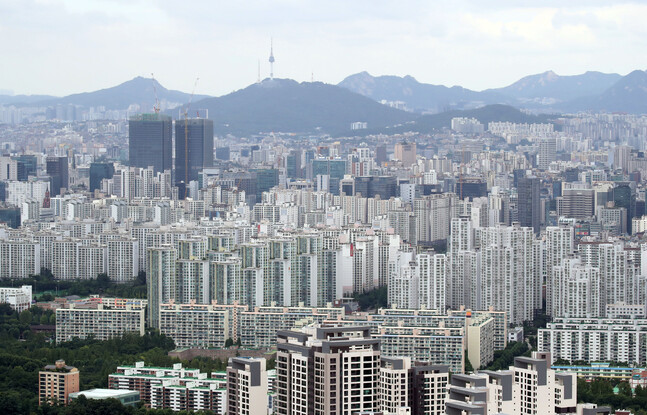
Apartment. yunhap news
As the local real estate market, which had been out of regulation, overheated, the volume of home sales and transactions in local metropolitan cities surged last month. Busan has nearly tripled its trading volume compared to a year ago, and Gwangju has more than doubled. However, it was investigated that the surge in local house prices was somewhat slowed down by the government’s measures to expand regulated areas on the 17th.

According to data from the Ministry of Land, Infrastructure and Transport on the 24th, the nationwide home sales volume in the past month was 11,6758 cases, an increase of 25.9% compared to October (92,769 cases) and 26.3% from the same month last year (92,413 cases). This is an increase of 34.8% compared to the average of the last five years (86,613 cases). As of January-November this year, it is 1139,000, the largest since the statistics were written in 2006. The surge in trading volume last month was led by the province. Local trading volume increased 48.7% from the previous month, and 72.4% from the same month last year. Among the provinces, due to the recent overheating of the real estate market, Busan (19,588 cases), which was designated as an adjustment target area, increased by 164.6% from a year ago (7404 cases), and Gwangju (5542 cases) compared to a year ago (2456 cases). It increased by 125.7%. On the other hand, the metropolitan area decreased 1.8% from the previous month and 15.3% from the same month last year. It was investigated that the recent surge in house prices, which was noticeable in the provinces, has been somewhat slowed down by the government’s measures to newly designate 37 regulated areas on the 17th. Looking at the’weekly apartment price trend’ announced by the Korea Real Estate Agency on this day, this week (as of the 21st), the price of local apartments rose 0.37%, compared with last week (0.38%), and the rise was broken. Busan, where most of the regions were grouped as adjustment targets, declined from 0.71% last week to 0.61% this week, and Ulsan, Nam-gu (1.13% → 0.63%) and Jung-gu (0.59% → 0.56%), which were designated as adjustment targets, declined. . However, after Suseong-gu, Daegu, where all regions were classified as regulated areas, increased slightly from 0.40% to 0.43%. In addition, Seoul (0.04% → 0.05%) and the metropolitan area (0.20% → 0.22%) were also slightly, but the rising trend expanded.

The weekly apartment rental price has moved sideways with a 0.14% increase in Seoul for the third week, and the Seoul metropolitan area has slightly decreased from 0.24% last week to 0.23% this week. The nationwide apartment rental price rose 0.30% as in the previous week, recording an increase of 68 consecutive weeks. On the other hand, after the passage of the New Lease Act, there were concerns about the decline in jeonse sales, such as the return of cheonsei products, but such an aspect was not detected in terms of cheonsei sales volume. The chartered transaction volume aggregated based on the data of the last month’s confirmation date was 10,613 cases, down 2.9% from October, but increased by 7.6% from the same month last year. Seoul also recorded 31,340 jeonse transactions, a 9.3% decrease from October, but an increase of 6.3% from the same month last year. The proportion of apartment rent in Seoul was 31.4% in November, which was the same as last year’s 31.3%. By Jin Myung-sun and Choi Jong-hoon, staff reporter [email protected]
